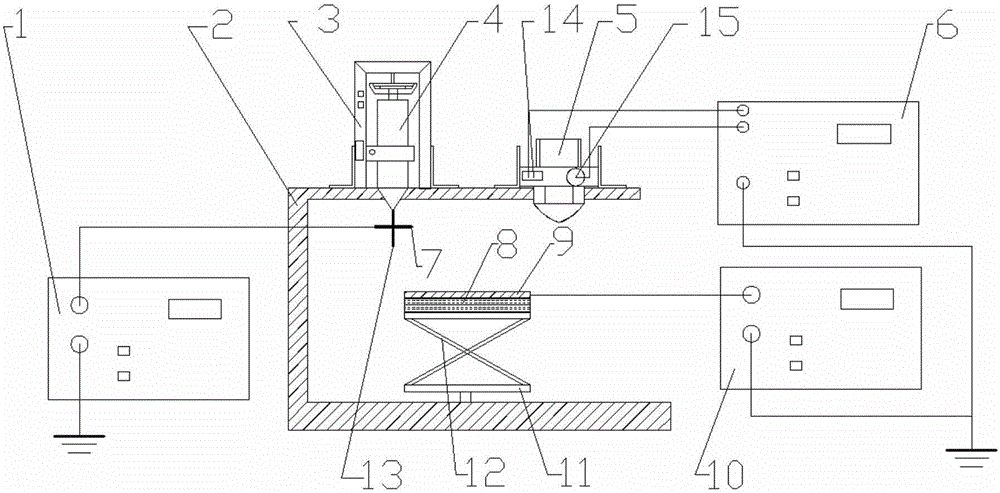3D printing method and device for manufacturing micro-fluidic chip by utilizing nanometer fiber paper base laminate
A microfluidic chip and nanofiber technology, which is applied in the directions of additive manufacturing, manufacturing tools, chemical instruments and methods, can solve the problems of difficulty in popularization and application, hidden safety hazards, and high requirements for folding accuracy, and achieves a simple, fast and economical process. The effect of manufacturing cost, simple and flexible method
- Summary
- Abstract
- Description
- Claims
- Application Information
AI Technical Summary
Problems solved by technology
Method used
Image
Examples
Embodiment Construction
[0025] The present invention will be further described below in conjunction with drawings and embodiments.
[0026] see figure 1 with 2 , the embodiment of the 3D printing device for manufacturing microfluidic chips by lamination of nanofiber paper base is provided with a DC power supply 1, a frame 2, a two-dimensional jet printing motion platform 11, a feed pump 3, a spinning needle 13, a liquid storage Syringe 4, 3D printing nozzle 5, auxiliary power supply 10, temperature control device 6, conductive substrate 7, insulating plate 8, collecting plate 9 and lifting platform 12.
[0027] The liquid storage syringe 4 is fixedly connected with the spinning needle 13, the liquid storage syringe 4 is fixed on the feed pump 3 through a clamping mechanism, and the feed pump 3 controls the supply of the polyimide solution in the liquid storage syringe 4 speed, so that the polyimide solution enters the spinning needle 13 continuously and evenly. The conductive substrate 7 is fixed ...
PUM
 Login to View More
Login to View More Abstract
Description
Claims
Application Information
 Login to View More
Login to View More - R&D Engineer
- R&D Manager
- IP Professional
- Industry Leading Data Capabilities
- Powerful AI technology
- Patent DNA Extraction
Browse by: Latest US Patents, China's latest patents, Technical Efficacy Thesaurus, Application Domain, Technology Topic, Popular Technical Reports.
© 2024 PatSnap. All rights reserved.Legal|Privacy policy|Modern Slavery Act Transparency Statement|Sitemap|About US| Contact US: help@patsnap.com









